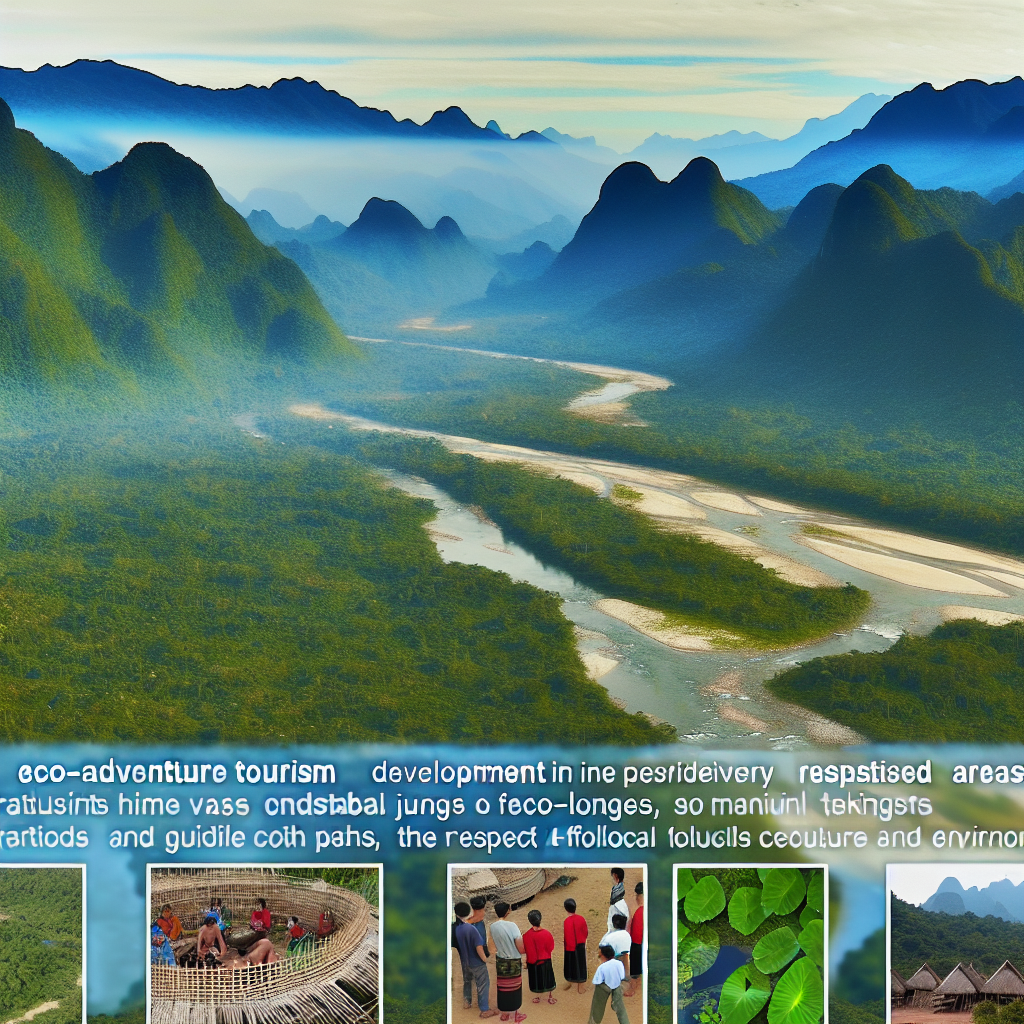Laos Opens Previously Restricted Areas for Eco-Adventure Tourism Development
Laos, a landlocked country in Southeast Asia known for its lush landscapes and rich cultural heritage, is making significant strides in eco-adventure tourism. Recently, the government has opened several previously restricted areas to sustainable tourism development, aiming to boost the economy while preserving the environment. This strategic move not only enhances Laos’s appeal as a unique travel destination but also promotes responsible tourism practices that benefit local communities.
Unlocking Hidden Gems: The New Eco-Adventure Frontiers
For decades, certain regions in Laos remained off-limits to tourists due to military restrictions, conservation efforts, or lack of infrastructure. These areas, often characterized by pristine forests, rugged mountains, and diverse wildlife, are now being carefully developed for eco-adventure tourism. Notable among these are parts of the northern provinces such as Phongsaly and Oudomxay, as well as remote sections of the Bolaven Plateau in the south.
These newly accessible zones offer a variety of eco-adventure activities, including:
- Jungle trekking through dense tropical forests
- Kayaking and rafting on unspoiled rivers
- Wildlife spotting and birdwatching in protected habitats
- Caving expeditions in limestone karst formations
- Community-based homestays that provide cultural immersion
Balancing Development and Conservation
Opening these areas to tourism comes with challenges, particularly in balancing economic growth with environmental protection. The Lao government, in collaboration with international organizations such as the Asian Development Bank and UNESCO, has implemented strict guidelines to ensure sustainable development. These include:
- Limiting the number of visitors to sensitive sites
- Promoting eco-friendly accommodations and infrastructure
- Engaging local communities in tourism planning and management
- Conducting environmental impact assessments before project approval
- Providing training programs on sustainable tourism practices
Such measures aim to prevent the negative impacts often associated with mass tourism, such as habitat destruction, pollution, and cultural erosion.
Case Study: The Bolaven Plateau – A Model for Eco-Adventure Tourism
The Bolaven Plateau, once a restricted military zone, has emerged as a flagship example of eco-adventure tourism development in Laos. Known for its cool climate, cascading waterfalls, and coffee plantations, the plateau now attracts adventure seekers and nature lovers alike.
Since opening to tourists, the region has seen a 35% increase in visitor numbers over the past three years, according to the Lao National Tourism Administration. Local communities have benefited through increased income from homestays, guided tours, and handicraft sales. Importantly, conservation efforts have been strengthened, with several community-led initiatives protecting endangered species such as the Indochinese tiger and the Asian elephant.
Economic and Social Impacts
The expansion of eco-adventure tourism into previously restricted areas is expected to contribute significantly to Laos’s economy. The tourism sector accounted for approximately 12% of the country’s GDP in 2023, and with these new developments, projections suggest a potential growth rate of 8-10% annually over the next five years.
Moreover, eco-tourism fosters social benefits by:
- Creating employment opportunities in rural areas
- Encouraging preservation of indigenous cultures and traditions
- Improving infrastructure such as roads and communication networks
- Enhancing environmental awareness among locals and visitors
Challenges and the Road Ahead
Despite the promising outlook, Laos faces several challenges in fully realizing the potential of eco-adventure tourism. These include limited infrastructure in remote areas, the need for skilled workforce development, and ensuring equitable benefit-sharing among communities.
To address these issues, the government is focusing on:
- Investing in sustainable infrastructure projects
- Partnering with NGOs and private sector stakeholders
- Implementing certification programs for eco-tourism operators
- Strengthening policies to protect natural and cultural resources
With continued commitment and collaboration, Laos is poised to become a leading destination for eco-adventure tourism in Southeast Asia.
Conclusion
Laos’s decision to open previously restricted areas for eco-adventure tourism marks a pivotal moment in the country’s tourism development. By unlocking these hidden natural treasures, Laos offers travelers unparalleled opportunities to explore untouched landscapes while supporting sustainable and community-centered tourism. The success of initiatives like those on the Bolaven Plateau demonstrates that economic growth and environmental conservation can go hand in hand. As Laos navigates the challenges ahead, its focus on responsible tourism development will be crucial in preserving its unique heritage and natural beauty for generations to come.





